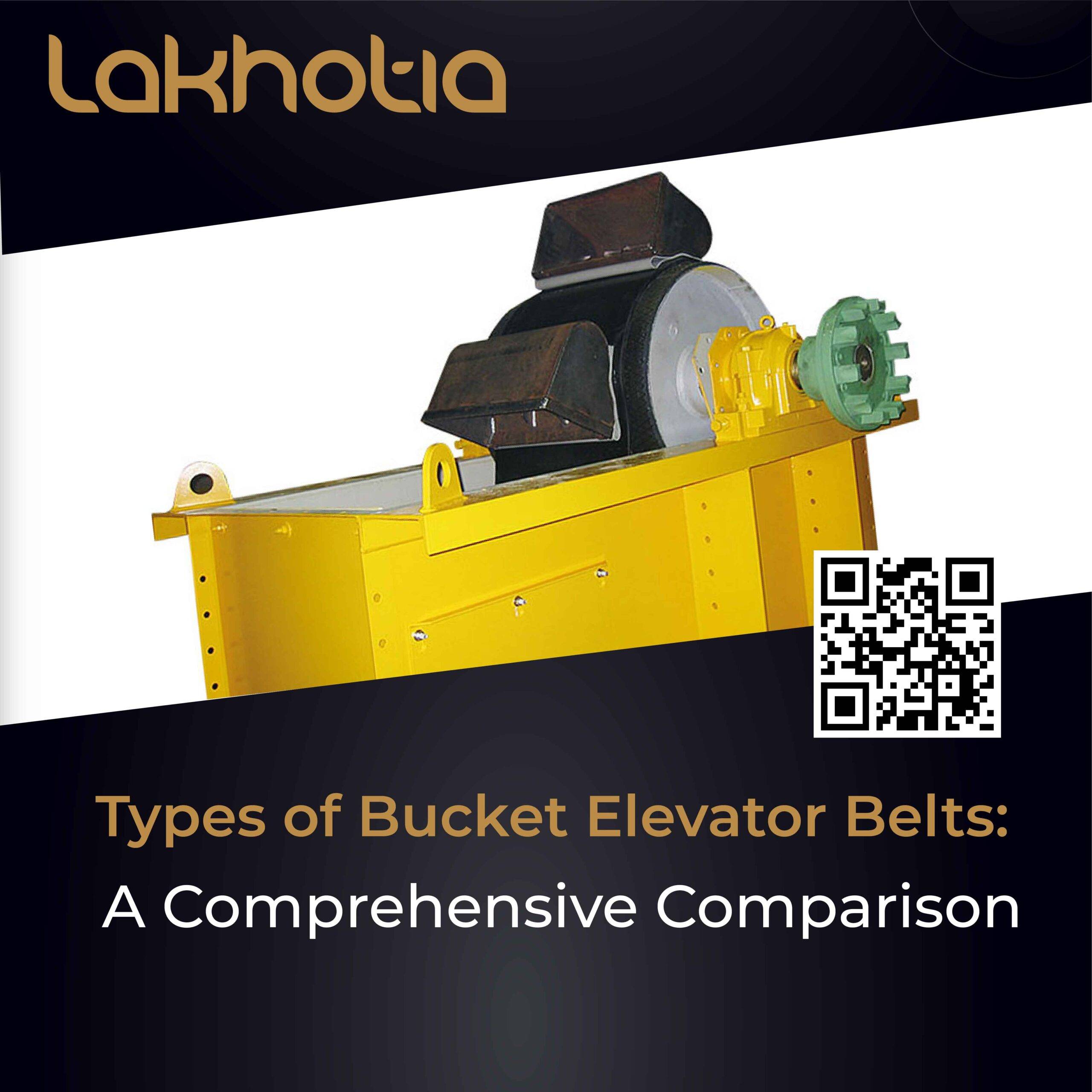Bucket elevator belts come in various types, each designed to meet specific material handling requirements and environmental conditions. Choosing the right type of bucket elevator belt is crucial to ensure efficient and reliable vertical material transport. Here is a comprehensive comparison of different types of bucket elevator belts:

Material: Rubber bucket elevator belts are made from rubber compounds. They are known for their high grip and durability.
Applications: Suitable for a wide range of materials, including grains, minerals, and aggregates.
Advantages: Good grip, abrasion resistance, and resistance to moisture and chemical exposure.
Considerations: Temperature limitations; not suitable for high-temperature applications.
Material: PVC (Polyvinyl Chloride) bucket elevator belts are made of plastic material.
Applications: Often used in food processing, agricultural, and industrial applications.
Advantages: Resistant to oil, chemicals, and moisture. Can handle various materials, including dry and wet products.
Considerations: Limited temperature range; not suitable for high-temperature applications.
Material: Nylon bucket elevator belts are constructed with nylon fabric layers.
Applications: Commonly used in industries requiring high strength and durability, such as mining and heavy-duty applications.
Advantages: Excellent tensile strength, flexibility, and resistance to impact and wear.
Considerations: May not be suitable for applications with exposure to moisture and certain chemicals.
Material: Steel cord bucket elevator belts contain steel cords embedded in the belt for extreme strength.
Applications: Ideal for demanding applications in mining, construction, and high-capacity bulk material handling.
Advantages: Exceptional strength, resistance to heavy loads and abrasion.
Considerations: Heavyweight, limited flexibility, may require specialized maintenance.
Material: Heat-resistant bucket elevator belts are designed to withstand high temperatures.
Applications: Used in industries where materials are elevated at high temperatures, such as cement, metallurgy, and foundries.
Advantages: Can handle hot materials, resist cracking and deterioration at high temperatures.Considerations: Limited resistance to certain chemicals and lower flexibility at room temperature.
Material: Flame-resistant bucket elevator belts are engineered to meet fire safety standards.
Applications: Essential in applications where fire hazards are a concern, such as coal mining and power plants.
Advantages: Self-extinguishing properties, low flame propagation, and reduced smoke generation.
Considerations: May have limited resistance to certain chemicals and reduced flexibility.
Material: Oil-resistant bucket elevator belts are designed to resist the effects of oil and related substances.
Applications: Used in industries where materials may be contaminated with oils, such as recycling and automotive plants.
Advantages: Resistant to oil and grease, maintaining belt integrity.
Considerations: Limited resistance to other chemicals and environmental factors.
Material: Anti-static bucket elevator belts are formulated to reduce static electricity buildup.
Applications: Common in industries where static electricity poses a hazard, such as chemical and pharmaceutical manufacturing.
Advantages: Reduces static electricity risks and potential dust explosions.
Considerations: May have limitations in terms of strength or chemical resistance.
Selecting the appropriate type of bucket elevator belt depends on your specific material handling needs, environmental conditions, and safety considerations. It’s essential to work closely with a knowledgeable supplier or manufacturer to ensure you choose the right belt for your application – Lakhotia India Pvt Ltd










